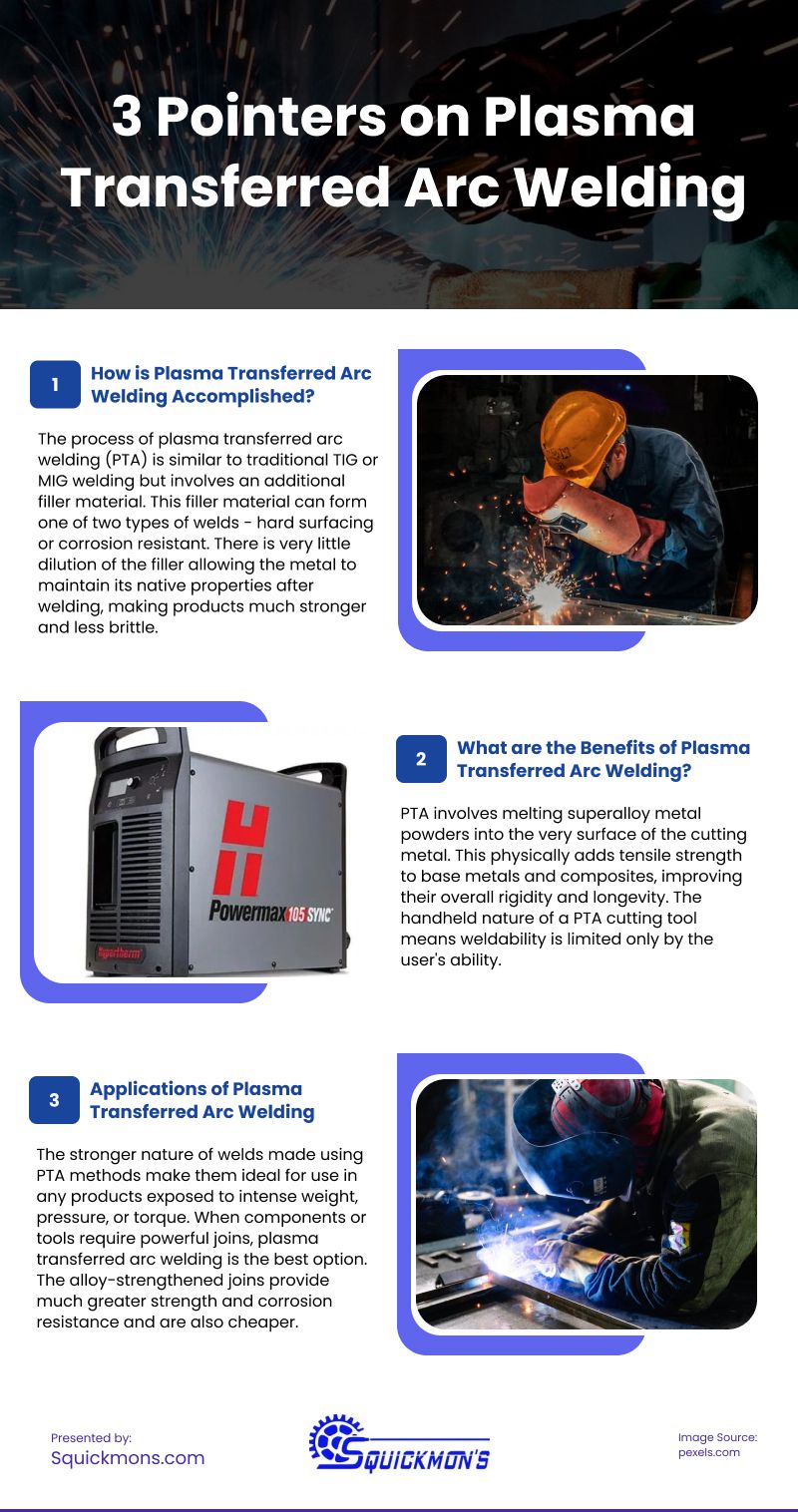
Any metal is susceptible to corrosion. No matter the type of metal, rust will ultimately start to show on it with enough time. The best way to maintain the metal quality in any structure is to coat all exposed surfaces with a corrosion-resistant coating. These layers greatly lower the rate of corrosion from all causes and shield the metal components from the elements exposure. These corrosion-resistant coatings may be applied using a variety of techniques, although some are more effective than others. Applying a protective outer layer is extremely successful when done using plasma-transferred arc welding (PTA). The metal is treated, coated, and sealed using a plasma arc to create a coating that is incredibly durable and resistant.
How is Plasma Transferred Arc Welding Achieved?
PTA functions in a manner similar to conventional arc welding, but it also uses a filler material (often superalloy metal powder or a rod of the same metal). These filler materials can be used to create either a hard surface weld or a corrosion-resistant weld.
The method produces a high-energy plasma arc between the electrode of the welding torch and the base material. This arc melts the base metal’s surface as it travels down the seam. If the filler material is in the form of wire, it is put into the rear of the weld pool; if it is in the form of powder, it is fed into the torch and then into the arc. The bonded overlay that is produced because of having this filler material integrated into it has a significantly stronger weld.
Because PTA produces greater temperatures, there is very little filler dilution, allowing the metal to keep its original characteristics after welding. As a result, they maintain their hardness and corrosion resistance, making items significantly tougher, less fragile, and more dependable. PTA welding is quicker than TIG or MIG welding and is frequently automated, making it a quick way to produce consistent welds.
What are the Advantages of Plasma Transferred Arc Welding?
Due to its anti-corrosive qualities, PTA is frequently used by welders and fabricators. By melting the superalloy metal powders into the very surface of the cutting metal, these characteristics aid in strengthening metallic projects. Beyond this, plasma-transferred arc welding offers several more noteworthy advantages.
For instance, base metals and composites gain tensile strength when a coating of metal powders is physically applied. This increases the metal’s total strength, giving it more stiffness and extending its useful life.
PTA techniques outperform traditional welding techniques. The cutting tool’s weldability is only constrained by the user’s skill due to its portability. It is great for any challenging task since you may use it at any angle, length, or position. The plasma arc can also be altered to suit the user’s requirements.
Applications of Plasma Transferred Arc Welding
PTA welds are stronger than other types of welds, making them perfect for usage in goods that are subjected to high loads, pressure, or torque. Some examples of these usages are slurry transportation and other pipe parts with high wear, innovative machinery for the oil sands or mining sectors, and riser apparatus.
source: https://squickmons.com/what-is-plasma-transferred-arc-welding/
Comments
Download this infographic.
